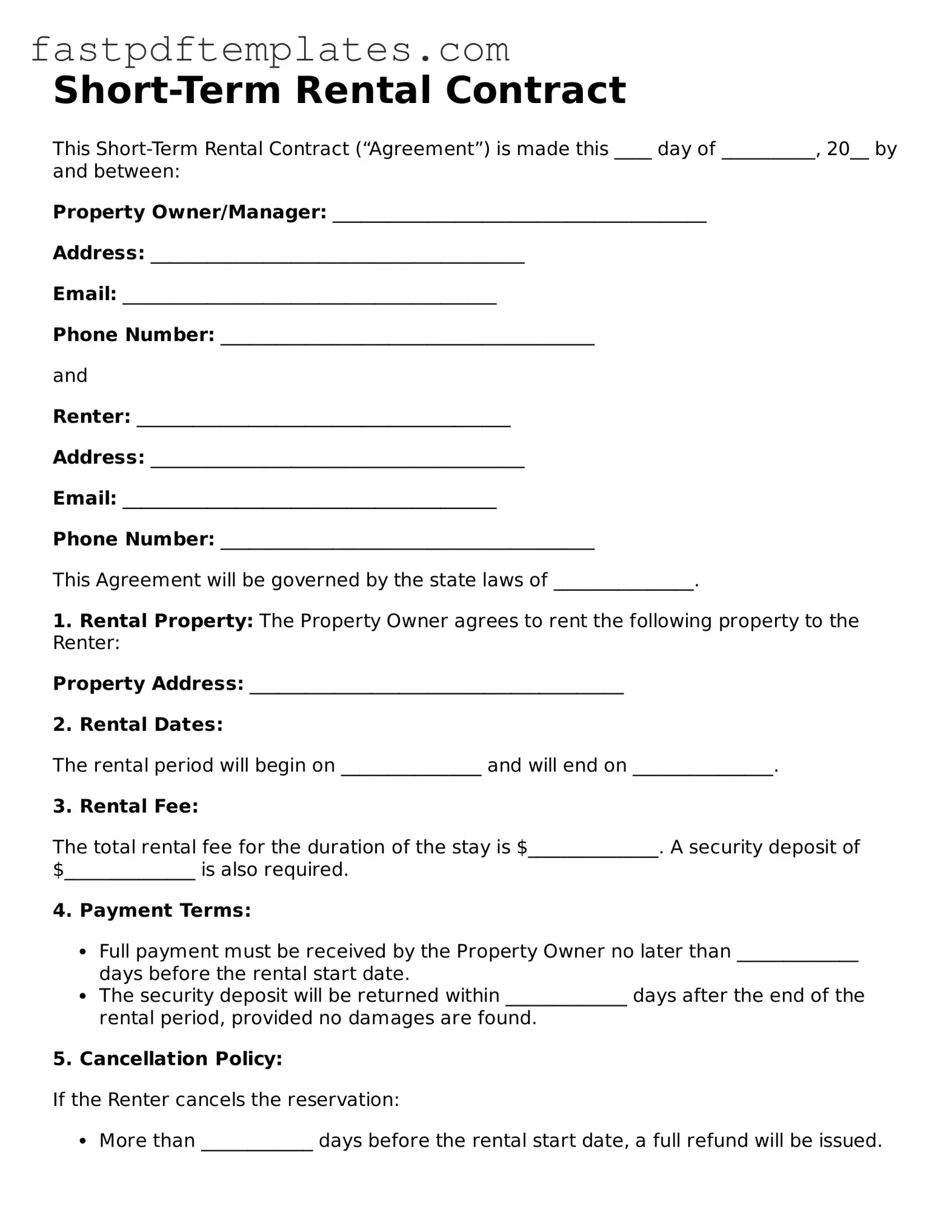Short-Term Rental Contract
This Short-Term Rental Contract (“Agreement”) is made this ____ day of __________, 20__ by and between:
Property Owner/Manager: ________________________________________
Address: ________________________________________
Email: ________________________________________
Phone Number: ________________________________________
and
Renter: ________________________________________
Address: ________________________________________
Email: ________________________________________
Phone Number: ________________________________________
This Agreement will be governed by the state laws of _______________.
1. Rental Property: The Property Owner agrees to rent the following property to the Renter:
Property Address: ________________________________________
2. Rental Dates:
The rental period will begin on _______________ and will end on _______________.
3. Rental Fee:
The total rental fee for the duration of the stay is $______________. A security deposit of $______________ is also required.
4. Payment Terms:
- Full payment must be received by the Property Owner no later than _____________ days before the rental start date.
- The security deposit will be returned within _____________ days after the end of the rental period, provided no damages are found.
5. Cancellation Policy:
If the Renter cancels the reservation:
- More than ____________ days before the rental start date, a full refund will be issued.
- Less than ____________ days before the rental start date, the security deposit will be forfeited.
6. Rules and Regulations:
The Renter agrees to comply with the following rules during the rental period:
- No smoking is allowed inside the property.
- No pets are allowed without prior consent from the Property Owner.
- Quiet hours will be observed from ______ PM to ______ AM.
7. Liability:
The Renter will be responsible for any damages or injuries sustained during their stay. The Property Owner is not liable for any loss, theft, or injury occurring on the property.
8. Governing Law:
This Agreement shall be governed by and construed in accordance with the laws of _______________.
9. Signatures:
By signing below, both parties agree to the terms outlined in this Agreement.
Property Owner/Manager Signature: _________________________ Date: _____________
Renter Signature: _________________________ Date: _____________
